Entertainment
Magdalena Bay Returns with Surprise Double Single “Second Sleep” and “Star Eyes”
Published
3 months agoon

There’s something quietly rebellious about dropping new music without warning on a random Friday, especially when you’re fresh off supporting Billie Eilish at the O2 Arena and have just wrapped two sold-out cemetery shows over the weekend. But that’s exactly what Magdalena Bay did, releasing “Second Sleep / Star Eyes“—their first tracks since last year’s Imaginal Disk sent critics scrambling for superlatives.
The timing feels deliberate rather than impulsive. Mica Tenenbaum and Matthew Lewin have spent months on the road, watching audiences connect with their progressive-pop experiments night after night. This past weekend at Hollywood Forever Cemetery—where LA’s music obsessives gather among tombstones for some of the city’s most surreal concert experiences—they gave fans something new to chew on.
“Second Sleep” arrives as the functional A-side, complete with a music video directed by Amalia Irons. The track unfolds like a controlled explosion across five minutes, starting with deceptive calm before drum fills and synthesizer squeals take over. There’s an unexpected left turn into funky R&B during a finger-snap breakdown that somehow makes perfect sense within the chaos. It’s restless music for restless minds.
The companion piece, “Star Eyes,” operates on different frequencies entirely. Where “Second Sleep” builds tension through disorder, this one floats through theatrical jazz-influenced dreamscapes. When the beat finally drops and symphonic strings sweep through, the emotional payoff feels earned rather than manufactured.

According to the duo, these tracks emerged naturally from the same creative headspace that produced Imaginal Disk. “Second Sleep” and “Star Eyes” are two songs we made around the end of Imaginal Disk—both a sort of spiritual successor to the album’s mood and emotional arc,” they explained. “We like how they complement each other, so here they are as a pair.”
That connection runs deeper than chronology. The band has been teasing an album movie to mark Imaginal Disk‘s one-year anniversary, with director Amanda Kramer collaborating while Tenenbaum and Lewin handle writing and editing. Anyone who caught the narrative threads in their videos for “Death & Romance,” “Image,” and “That’s My Floor”—or their Jimmy Kimmel Live! performance—knows these aren’t artists who treat visuals as afterthoughts.
Their trajectory keeps climbing. Following this weekend’s cemetery performances, they’ll return to the UK and Europe in early 2026, including their largest London show yet at O2 Academy Brixton. It’s quite the leap from their Miami beginnings and early LA club shows, though they’ve maintained the same DIY sensibility that made their early-2000s internet-inspired visuals feel both nostalgic and alien.
The duo initially caught attention through TikTok videos demystifying music industry mechanics, but these new tracks prove they’re more interested in creating mysteries than solving them. Their blend of progressive rock, shoegaze, and disco continues evolving into something increasingly difficult to pin down—which might be the point.
What’s compelling about “Second Sleep” and “Star Eyes” isn’t just that they extend Imaginal Disk‘s sonic universe. It’s that they arrived unannounced, like messages from artists who understand that sometimes the best way to maintain momentum is to disrupt it entirely. This past weekend, when they took the stage among the headstones, these songs weren’t surprises anymore. They’d already become part of the mythology.
Indie music journalist digging up the stuff algorithms overlook. No industry fluff, just honest takes and good music. Self-taught, self-published, doing it for the love, not the clicks.

You may like
-


Marloma Talks Learning to Stop Writing in Isolation and Trust the Chaos
-


Zizzo World Is Building Momentum That’s Hard to Ignore
-


Inside the Amazon Reinstatement Process: The aSellingSecrets Approach
-


Golden Bay Beach Hotel — A Luxury Beachfront Escape in Larnaca, Cyprus
-


Nodust Writes His Lyrics Last and That’s Exactly the Point
-


Finding Strength in Walking Away Is the Real Message Behind Judy Pearson’s New Single
Entertainment
Marloma Talks Learning to Stop Writing in Isolation and Trust the Chaos
Published
4 days agoon
January 6, 2026
Marloma used to write alone. Locked away with a piano or guitar, wouldn’t present anything until it met exacting standards, followed strict release timelines and marketing strategies. Everything controlled, everything polished before anyone else could hear it. Then came John Curtis-Sanchez, a guitarist and audio engineer whose approach is the complete opposite. He tries everything, isn’t afraid of vulnerability or imperfection in the early stages, lets happy accidents happen before worrying about polish.
It shifted everything. The songs she wrote still came from that place of isolation and perfectionism, but John’s production approach brought something different to the arrangements. Happy accidents in the studio, experimental choices she wouldn’t have made alone. Her songwriting instincts combined with his production sensibility created something neither could have done separately.
That’s essentially the story of Marloma, the Phoenix-based Sad Girl Indie-Pop Rock band that’s gone from a bedroom project to a full collaborative force involving 100 local creatives on their upcoming concept EP. With over 30k+ Instagram followers and a growing reputation across Arizona venues like The Marquee and Crescent Ballroom, Marloma isn’t just one person anymore. The band now includes guitarist and producer John Curtis-Sanchez, bassist and vocalist Kalleigh Gibson, keys player and backup singer Cassidy Brooke, and drummer Angelita Mia Ponce. Together, they’re making music for young women who feel too much and need to hear they’re not alone in it.

You’ve written nearly 300 songs. Take us back to the specific moment when you knew this was what you were going to do.
I have always known I loved writing songs and singing, but the pivotal moment in my life where I decided it was worth pursuing as a career path was when I was 14 years old. My friend of the same age was diagnosed with a rare form of cancer and tragically passed away.
It happened so fast, I still feel completely devastated that she is no longer here to make me laugh. I tried to process my grief the way I process all of my feelings, through songwriting. My mom heard me playing the tribute I wrote and asked to share it.
When my friend’s mom heard it, she asked me to perform it at my friend’s celebration of life. I remember feeling the weight in the air as I walked up to the front and began singing her song. It felt like the one moment that wasn’t absolutely dreadful because I felt that I truly made a connection. Not just with every attendee, but with her.
I was thanking her and making a promise to keep her memory alive and in that moment I kind of really felt like she understood. I don’t know what I believe in terms of anything spiritual but I know what I felt in that moment.
So I decided that even if I wasn’t a doctor or a lawyer, creating art was an important job and I wanted to be one of the people to do it. In fact, the reason that the Marloma brand is so heavily associated with the color green is to honor her. Green is her favorite color and the color of her eyes, which I liked to call her “emerald eyes.”
If someone’s never heard your music before, how would you describe what you do and what you hope they take from it?
I would describe my music as “Sad Girl Indie-Pop Rock” because it comes from a place of deep vulnerability and I think women might resonate with it the most. I truly hope that when people listen to my music they feel validated in any harsh emotions they may try to hide. I want them to really feel the words, which is why I implement prosody in my music. Essentially, I make the melodies match any words that could describe a melody. For example, if I say the word “high” I would make the melody go higher in pitch so that it subconsciously resonates with the listener.
Walk us through how you actually create. Where does it happen? What does the process look like from the first spark to the finished product?
For me, melody lines and lyrics have always come at the same time so I never have to worry about adding music to my lyrics or vice versa in post. Most times I’m home alone and I begin to play a chord progression on an instrument like a piano or guitar. Then, the rhythms and rhymes just kind of happen. Although lately inspiration has been striking me in the car. I have a complete library of single lyrics sung in my voice memos app accompanied by the sound of wind whooshing past my car windows and grainy noise from the air conditioner.
I have to capture it in the moment so I can mold and shape the idea when I’m home in front of my instruments. I never sit down with an idea or situation or feeling in mind when I write a song. In fact, I rarely am aware enough to understand what’s going on in my own head until I listen back to my completed song. That’s when I understand what feelings and tones I’ve been hiding from myself. Songwriting is truly therapeutic.
What’s something you had to figure out the hard way?
I had to learn that some people just aren’t going to take me seriously because I’m a woman in the music industry. And as a matter of fact, if they do, I probably have to earn that respect by doing twice as much as they’d expect. Talent won’t really get you anywhere if you’re not also constantly working on building your audience, honing your skills, educating yourself and making sacrifices. I’m happy to do all of those things, but it does feel like I’m often underestimated regardless.
What are you working on right now that you’re excited about?
I just released my heaviest rock song to date on January 1st, called “Win.” This song serves as the embodiment of female rage and revenge fantasy, so I’m very excited about the music video that’s in its final stages to accompany this song. I really put my trauma on display in this video and it was honestly pretty hard to film and relive but I couldn’t be more proud of how it turned out and the message it gets across. I won’t say too much on the plot but I will say that it is the darkest visual story I’ve ever experimented with and the thesis is that our vulnerability connects and empowers us as women.

The band is also working on a concept EP that’s been in development for five years, a cautionary tale about addiction wrapped in a love letter to Arizona’s creative community. It involves animated music videos, character vocalists, extended comic book lore, and a release show that’ll include instrument raffles and theatrical elements. It’s the kind of project that takes 100 local creatives to pull off, and it’s all building toward a show that’ll rival anything Marloma’s done before.
What started as writing alone in a room, perfecting every detail before anyone could hear it, has turned into something bigger than one person could have created. Each band member brings something different. John’s Punk-Rock guitar, Kalleigh’s Country-influenced bass lines, Angelita’s Latin and R&B drumming, all mixing with alternative-pop sensibility into something that doesn’t fit neatly into any single genre. It’s a “total genre melting pot,” and it works. It’s what happens when you stop trying to control everything and let other people’s strengths shape the sound. The songs that come out of that process, the ones with the happy accidents left in, those are the ones that end up connecting.
Marloma’s music is available on Spotify, Apple Music, YouTube, and SoundCloud. For more information, visit marloma.org and follow the band on Instagram, TikTok, and Facebook. Upcoming show dates are available on Bandsintown.
Entertainment
Zizzo World Is Building Momentum That’s Hard to Ignore
Published
2 weeks agoon
December 29, 2025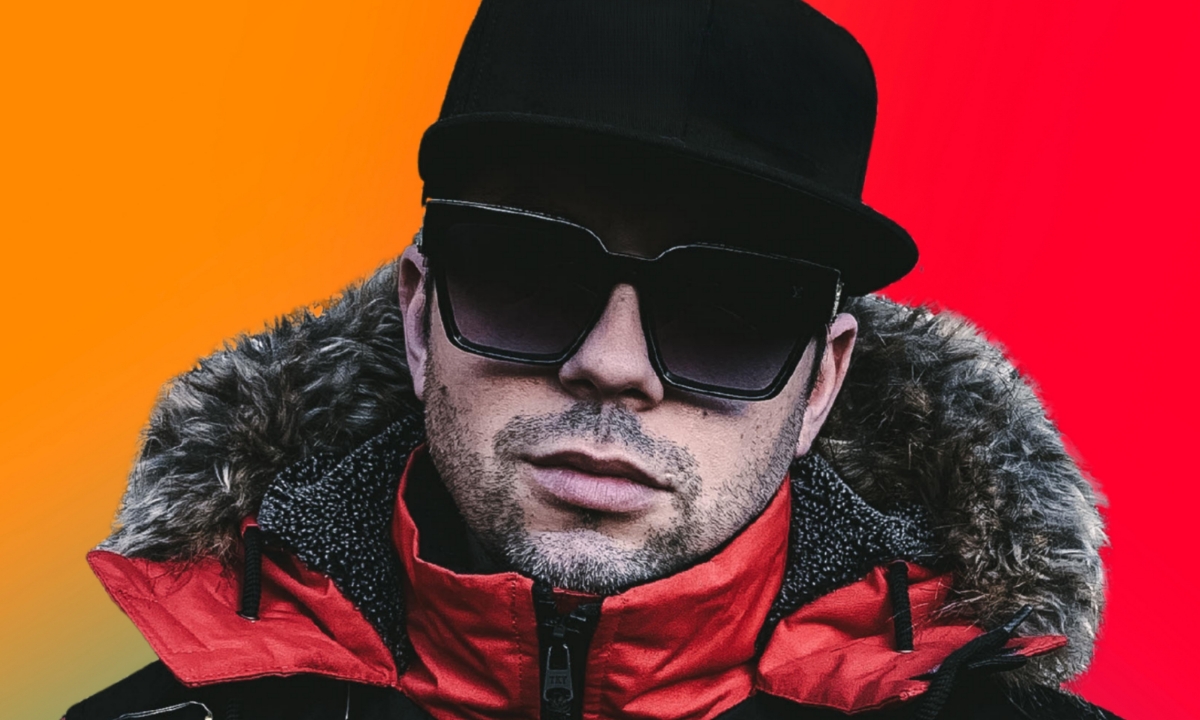
Most producers spend years chasing one big break. Sergiu Cociorva, the Moldova-born artist behind Zizzo World, is watching several arrive at once. After years of grinding in bedroom studios from New York to London, the pieces are finally clicking into place in ways that suggest he’s not just having a moment, he’s building momentum.
The numbers tell part of the story. Support from Tiësto, David Guetta, and Calvin Harris. Second place in Spinnup’s Dance Banger competition, judged by Topic. “Roller coaster” hitting No.4 on Spotify’s Top 50 in Latvia. But what makes Zizzo World interesting right now isn’t just the wins, it’s that he’s leveraging them into something bigger. He’s running two labels (One Mood Music and Enjoy Record), producing for other artists, and still pushing his own sound in new directions.

Case in point: “Body Moving,” his new Afro House track with EARTH VOX LABEL, which dropped November 28. It’s a 2:46 blend of afro rhythms and deep grooves that shows a producer confident enough to step outside his EDM and pop-house comfort zone. The move’s paying off. Blogs and curators are responding positively, and more importantly, it’s opening doors. He’s got a February release coming through Sundle Records via Warner Music Italy, with at least five more releases planned for 2026 and his first full album in the works.
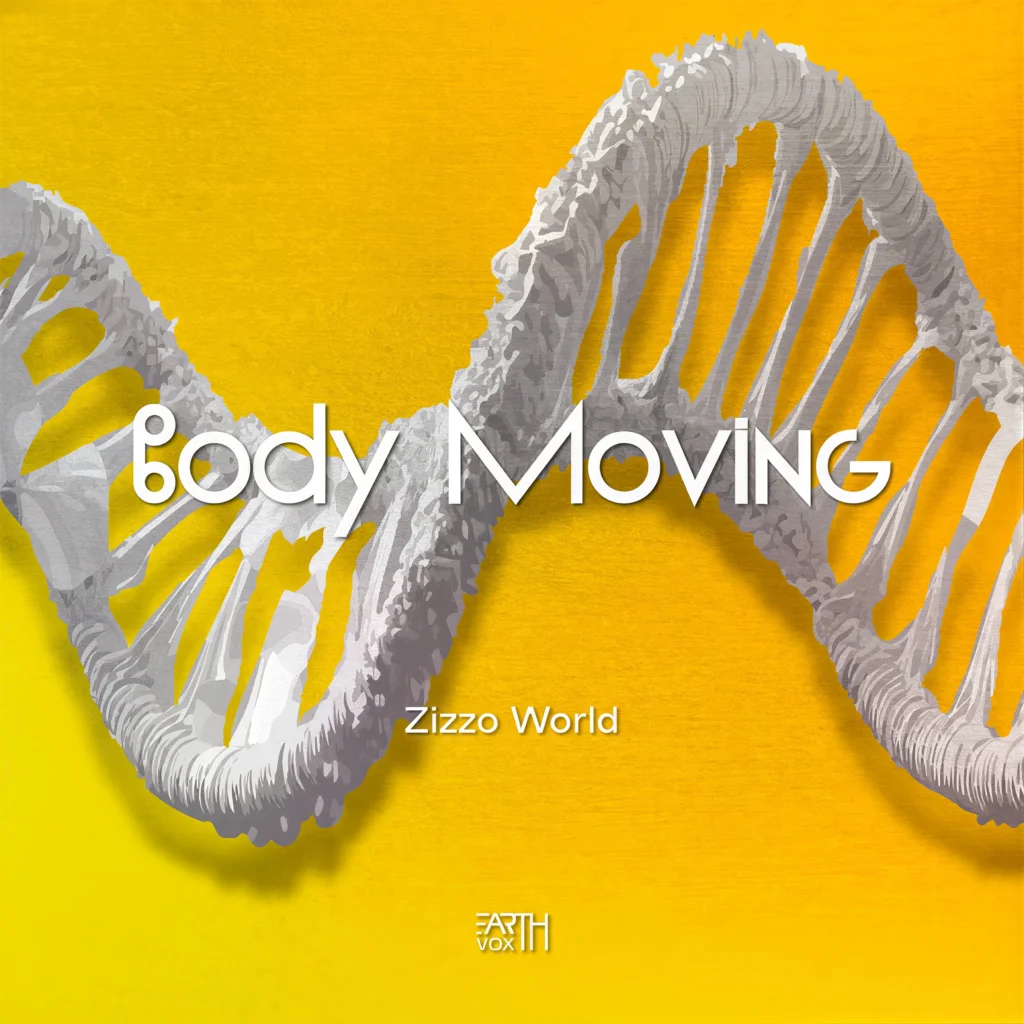
This didn’t happen overnight. Zizzo World picked up an accordion at 4, smashed countless brooms pretending they were guitars, played in a college band called Broken Paddle, and started producing in Logic Pro after moving to New York in 2008. Since then, it’s been almost daily work in whatever studio space he could carve out. These days that’s a bedroom setup in London, where he’ll sometimes wake up at 2 AM because inspiration doesn’t keep office hours.
What stands out is how realistic he is about the process. He’s upfront about managing expectations, trusting the grind, and understanding that teams can fall apart if people don’t believe in the timeline. He stopped singing before COVID to focus on production, a practical choice that freed him up to build the infrastructure he needed. Now he’s got two labels, artists he’s working with under both imprints, and enough momentum to start thinking bigger.
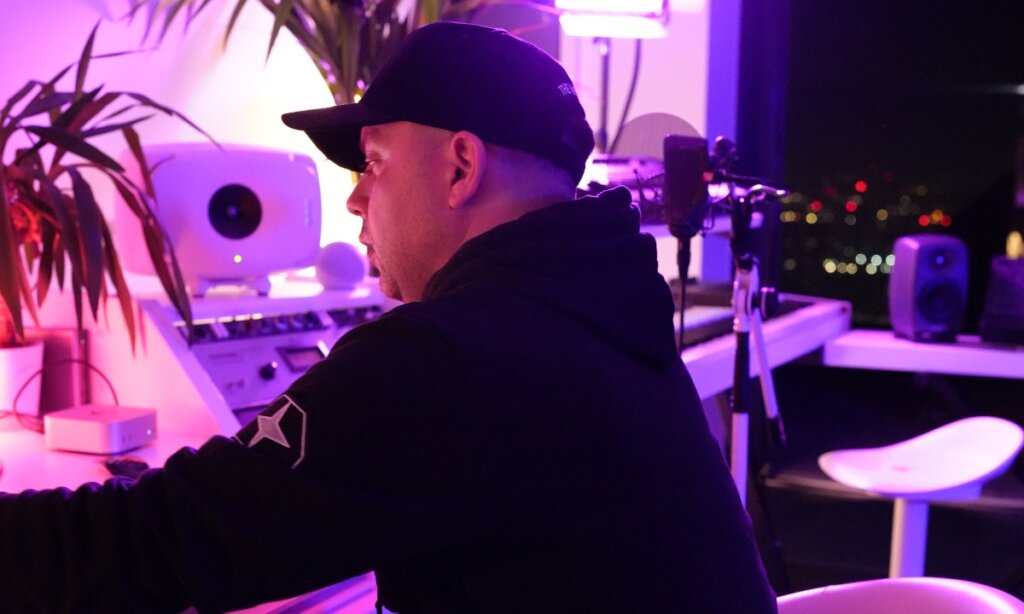
The music itself pulls from everywhere he’s been. Moldova, New York, London, all the collaborations with different artists and personalities along the way. He’s not chasing perfection, he’s chasing sincerity, trying to add value with each release. It’s working because it feels genuine rather than calculated.
His goal goes beyond streams or chart positions. He wants to create spaces where people connect, whether that’s with themselves or with each other. It’s ambitious, but he’s got the work ethic to back it up. Five releases next year, the first album, ongoing projects for artists under his two labels, he’s treating 2026 like someone who’s done the work and is ready to capitalize on it. With the infrastructure in place and the momentum already rolling, Zizzo World isn’t hoping for breaks anymore. He’s making them happen.
Connecrt with Zizzo World via Facebook, YouTube, Spotify, Apple Music, Instagram, TikTok, X, and SoundCloud.
Entertainment
Nodust Writes His Lyrics Last and That’s Exactly the Point
Published
1 month agoon
December 6, 2025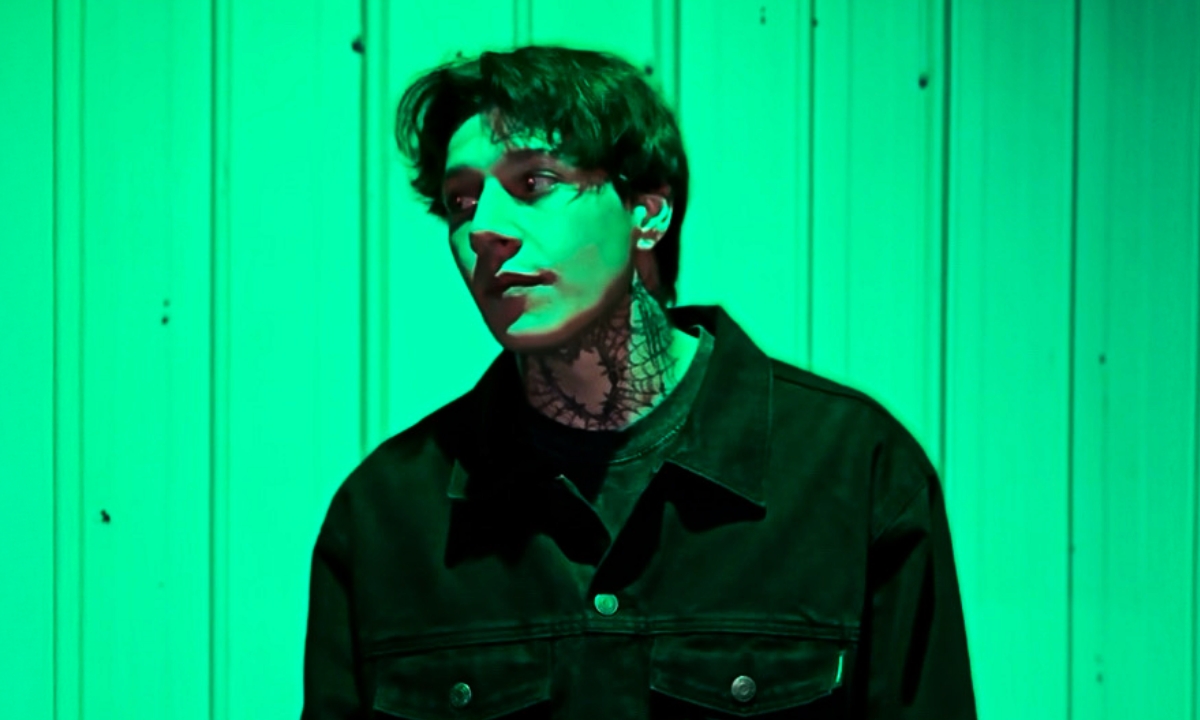
There’s a moment in Nodust’s creative process where nothing makes sense, and that’s by design. Before a single coherent word hits the track, he’s in front of his mic spitting pure nonsense, syllables that mean nothing but feel like everything. It sounds absurd until you realize it might be the most honest approach to making rap music in 2025.
The artist has built his entire workflow around what he casually calls “gibberish.” He loads a beat into FL Studio, throws on his baseline vocal preset, and starts recording sounds that aren’t words. At this stage, he’s not writing. He’s hunting for something more primal: the melody, the emotional peaks, the places where a vocal effect might hit harder. The lyrics come later, reverse-engineered from the shapes his voice already made.
“I literally spit gibberish in the mic,” Nodust explains. “At this point I’m just trying to create the melody and find key points for vocal emphasis and effects, then I listen back and I write lyrics to the gibberish.”
It’s a technique that flips traditional songwriting on its head. Most rappers start with bars, with meaning, with something to say. Nodust starts with feeling, trusting that the right words will eventually find their way into the spaces his instincts already carved out. The approach raises a question worth asking: in an era where melodic rap dominates, does what you say matter less than how it sounds when you say it?
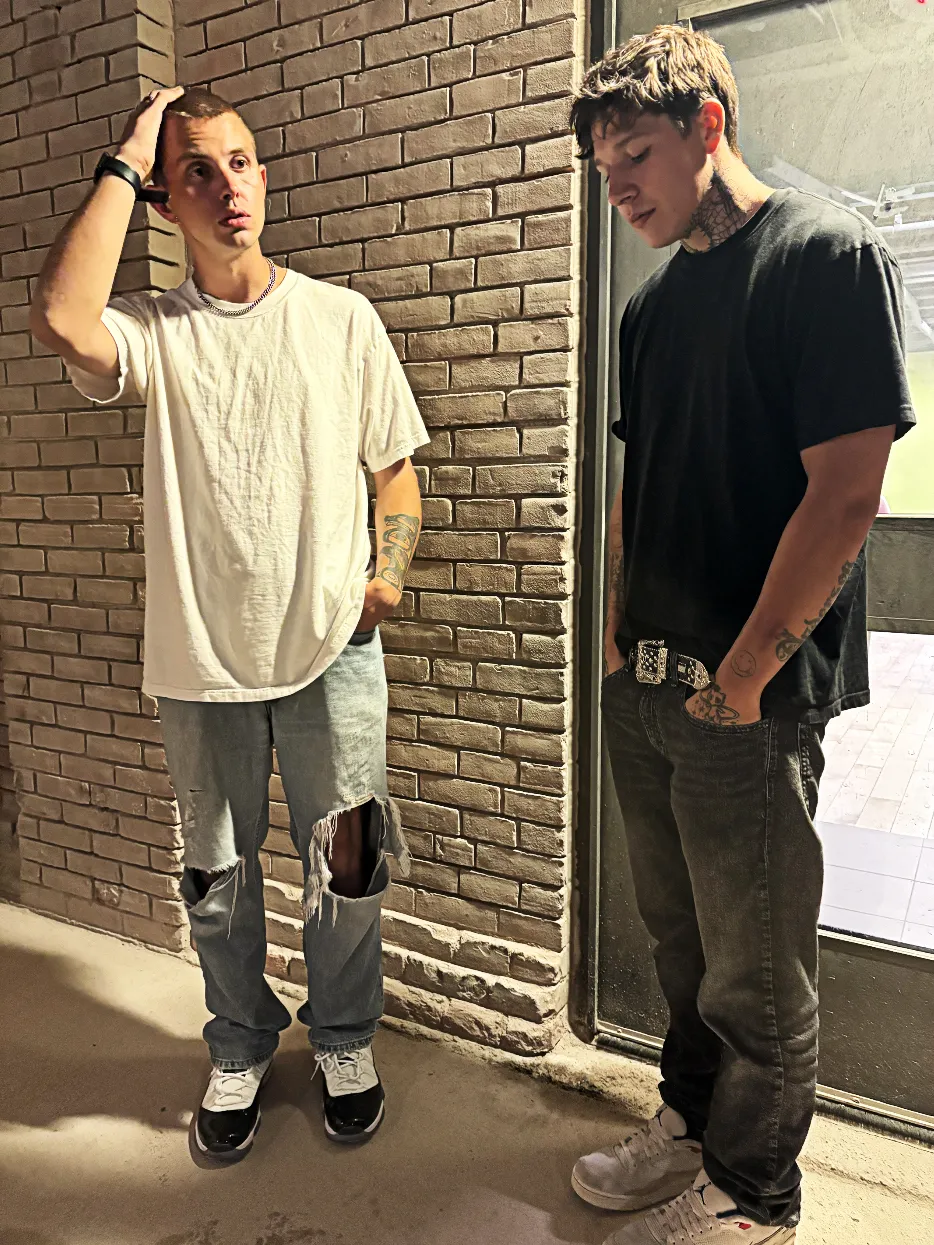
The answer, if you’ve been paying attention to artists like Nettspend, esdeekid, and Xaviersobased, seems to be yes. These are the names Nodust cites when talking about discovering what he calls “ultra technical flows that have never been done before.” Not technical in the traditional sense of dense wordplay or complex rhyme schemes, but technical in the architecture of sound itself. The way a syllable bends. The precise moment a voice cracks into something vulnerable. The texture of a phrase that might not parse grammatically but hits you somewhere beneath language.
Nodust came up through the emoplugg scene, drawing heavy inspiration from artists like D1v, Bladee, and his best friend Kill Red. That foundation taught him something crucial about emotional resonance. He describes certain songs as being “like drugs,” and he’s not using the comparison loosely. “I swear they put drugs in those songs,” he says of D1v’s “Sound of Silence” and Kill Red’s “Notice.” “I’ve had full days of only listening to those songs on repeat all day. Like 8 hours straight.”
That obsessive relationship with music, which he attributes partly to his ADHD, informs everything about how he creates. When he found himself drawn to the trap and jerk beats that exploded over the past year, he noticed a gap. Nobody was bringing that emoplugg melodic sensibility to the new sound. The result was tracks like Clairvoyance with producer 999ines, a song that made him feel, for the first time, like he might actually have a shot at making it.
What makes Nodust’s situation unique is that he’s doing all of it alone. Writing, recording, mixing, mastering, cover art, video editing. There’s no team parsing his gibberish recordings into polished product. It’s just him, often for 14 hours straight, because stopping means the song might never get finished. “If I don’t finish it in one go it’ll never get finished,” he admits.

His latest release Numbers, which dropped November 28, continues the formula: massive bass, signature cadence, vocals that prioritize vibe over verbose. It’s music that doesn’t ask you to think. It asks you to feel.
The self-sufficiency extends to his visuals, with videos like M.I.A., Zoot, and Geeked shot by his girlfriend SuziWithAnUzi, who’s established herself in the Toronto scene and serves as both collaborator and proof of concept that this path can actually work.
Nodust is quick to credit the people around him, including producers like Sheepy, his longtime collaborator c0ll!e, and his mom, who genuinely gets pissed if he drops something without sending it to her first. But the creative core remains solitary, almost meditative. He describes making music as “the only time I can actually be in the moment and I’m not worrying about the past or the future.”
There’s something worth noting about an artist who builds songs from meaningless sounds and considers that the most genuine part of the process. In an industry obsessed with authenticity, Nodust has found his by abandoning meaning entirely at the start. The words come last because the words aren’t the point. The point is that high, that feeling, that moment when a syllable lands exactly right even if nobody, including the person who made it, could tell you what it means.
Maybe that’s where rap is heading. Maybe it’s always been there, and we’re just now getting honest about it.
With Toronto shows planned throughout the year, you can keep up with Nodust on Instagram, TikTok, YouTube, X, Soundcloud, and Apple Music.



Marloma Talks Learning to Stop Writing in Isolation and Trust the Chaos

Zizzo World Is Building Momentum That’s Hard to Ignore

Yash Kapoor Wants His Records To Feel Like Moments, Not Just Music

Inside the Amazon Reinstatement Process: The aSellingSecrets Approach

Golden Bay Beach Hotel — A Luxury Beachfront Escape in Larnaca, Cyprus

Nodust Writes His Lyrics Last and That’s Exactly the Point

Finding Strength in Walking Away Is the Real Message Behind Judy Pearson’s New Single

Joaquina’s “Freno” Captures the Push and Pull of Letting Go

Young Romanian Entrepreneur Explores Lisbon’s Thriving Startup Scene

Electric Ferries Will Save Money But Harbors Can’t Afford Them, Says Harbor Current Foundation Inc.

Leading With Purpose: How Dr. Rasheda Jackson is Redefining Success for Women in Business

The Quarantined Release ‘Aversion To Normalcy,’ An Album Born From War and Survival

Coastal Harmony: Discovering Cyprus with Lordos Beach Hotel as Your Haven

Meet Kaziboii, the Afrobeats Artist Mixing Drill Energy With Vibrant Soul

LBE Scar on His Two EPs, Loyalty, Fatherhood, and Opening for Bone Thugs-N-Harmony

Jason Luv Dominates Charts While Inspiring New Wave of Multi Career Artists

Harley West | Inside the Mind of a Social Media Star on the Rise

Raw Fishing | Franklin Seeber, Known As “Raww Fishing” Youtuber Story

Jordana Lajoie Transforms Montreal Roots into Hollywood Success Story

A New Hollywood Icon Emerges in Madelyn Cline

Who is Isaiah Silva – The Story Behind The Music

Tefi Valenzuela Pours Her Heart into New Song About Breaking Free

G FACE Releases His New Single “All up,” and It’s Fire

Kaia Ra | Perseverance That Built a Best-Selling Author

Gearshift to Stardom: Nikhael Neil’s Revolutionary Journey in the Automotive Industry

Holly Valentine | Social Media Influencer & Star Success Story

Kate Katzman | Breaking Into Hollywood and Embracing Change

Thara Prashad | Singer Evolves to Yoga & Mediation Superstar

Tadgh Walsh – How This Young Entrepreneur is Making a Name for Himself

King Lil G | West Coast Hip Hop Genius Rises to Face With Ease

Tefi Valenzuela Pours Her Heart into New Song About Breaking Free

Kate Katzman | Breaking Into Hollywood and Embracing Change

Holly Valentine | Social Media Influencer & Star Success Story

Kaia Ra | Perseverance That Built a Best-Selling Author

Lil Ugly Baby XXX’s “Who?” – The Mixtape to Boost Your Playlist

Samuel Chewning Explains How Fitness Should Be A Personal Journey

Trending
-

 Business4 years ago
Business4 years agoJason Luv Dominates Charts While Inspiring New Wave of Multi Career Artists
-

 Entertainment3 years ago
Entertainment3 years agoHarley West | Inside the Mind of a Social Media Star on the Rise
-

 Culture4 years ago
Culture4 years agoRaw Fishing | Franklin Seeber, Known As “Raww Fishing” Youtuber Story
-

 Culture2 years ago
Culture2 years agoJordana Lajoie Transforms Montreal Roots into Hollywood Success Story
-

 Culture2 years ago
Culture2 years agoA New Hollywood Icon Emerges in Madelyn Cline
-

 Entertainment12 months ago
Entertainment12 months agoWho is Isaiah Silva – The Story Behind The Music
-

 Entertainment3 years ago
Entertainment3 years agoTefi Valenzuela Pours Her Heart into New Song About Breaking Free
-

 Culture3 years ago
Culture3 years agoG FACE Releases His New Single “All up,” and It’s Fire

